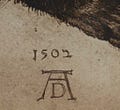Intellectual property
It's unlikely that the first ever court case in history was won on equity rather than strength or ruse. It's reassuring to know that the world's first copyright case was reportedly won by the plaintiff fair and square.
In 1506, the German artist Albrecht Dürer was visiting Venice as an agent of a German trading company. He had ar…
Keep reading with a 7-day free trial
Subscribe to Biblonia to keep reading this post and get 7 days of free access to the full post archives.


